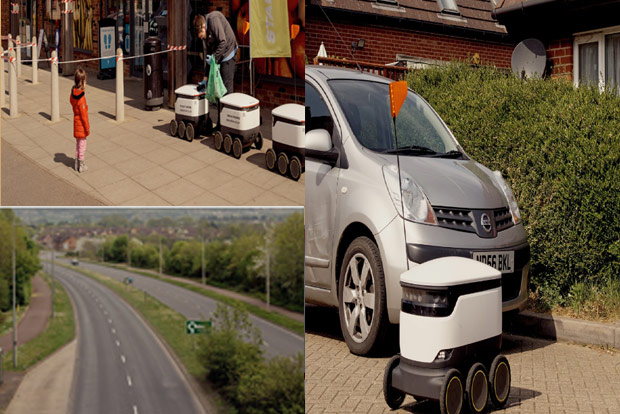Begin typing your search...
Tech to the rescue: A city in lockdown to fight COVID, but robots on the move
If any place was prepared for quarantine, it was Milton Keynes. Two years before the pandemic, a start-up called Starship Technologies deployed a fleet of rolling delivery robots in the small city about 50 miles northwest of London.

Chennai
The squat six-wheeled robots shuttled groceries and dinner orders to homes and offices. As the coronavirus spread, Starship shifted the fleet even further into grocery deliveries. Locals like Emma Maslin could buy from the corner store with no human contact.
“There’s no social interaction with a robot,” Maslin said. The sudden usefulness of the robots to people staying in their homes is a tantalising hint of what the machines could one day accomplish — at least under ideal conditions. Milton Keynes, with a population of 270,000 and a vast network of bicycle paths, is perfectly suited to rolling robots. Demand has been so high in recent weeks, some residents have spent days trying to schedule a delivery.
In recent years, companies from Silicon Valley to Somerville, have poured billions of dollars into the development of everything from self-driving cars to warehouse robots. The technology is rapidly improving. Robots can help with deliveries, transportation, recycling, manufacturing. But even simple tasks like robotic delivery still face myriad technical and logistical hurdles. The robots in Milton Keynes, for example, can carry no more than two bags of groceries. “You can’t do a big shop,” Maslin said. “They aren’t delivering from the superstores.”
A pandemic may add to demand but does not change what you can deploy, said Elliot Katz, who helps run Phantom Auto, a start-up that helps companies remotely control autonomous vehicles when they encounter situations they cannot navigate on their own. “There is a limit to what a delivery bot can bring to a human,” Katz said. “But you have to start somewhere.”
Industry veterans know this well. Gabe Sibley, an engineer and a professor who previously worked with the NASA, started Zippy for sidewalk deliveries in 2017. But the San Francisco company quickly ran into challenges. The robots could move only at the pace of walking, around 1 mile per hour. That severely limits the delivery area, particularly for hot food, Sibley said. The company never deployed any robots, selling in 2018. “In this country, where we designed our cities around the car, the solution to sidewalk delivery is to use the roads,” Sibley said.
Founded in 2014 and backed by more than $80 million, Starship Technologies is based in San Francisco, and it has deployed most of its robots on college campuses in the United States. Equipped with cameras, radar and other sensors, the robots navigate by matching their surroundings to digital maps built by the company in each new location.
The company chose Milton Keynes for a wider deployment in part because the robots could navigate it with relative ease. Built after World War II, the city was carefully planned, with most streets laid out in a grid and bicycle and pedestrian paths, called “redways,” running beside them.
When the Starship robots first arrived in Milton Keynes, one of the fastest-growing cities in Britain, Liss Page thought they were cute but pointless. “The first time I met one, it was stuck on the curb outside my house,” she said. Then, in early April, she opened a letter from the NHS advising her not to leave the house because her asthma and other conditions made her particularly vulnerable to the coronavirus. In the weeks that followed, the robots provided a much-needed connection to the outside world.
— Metz and Griffith report on technology for NYT©2020
The New York Times
Visit news.dtnext.in to explore our interactive epaper!
Download the DT Next app for more exciting features!
Click here for iOS
Click here for Android
Next Story



